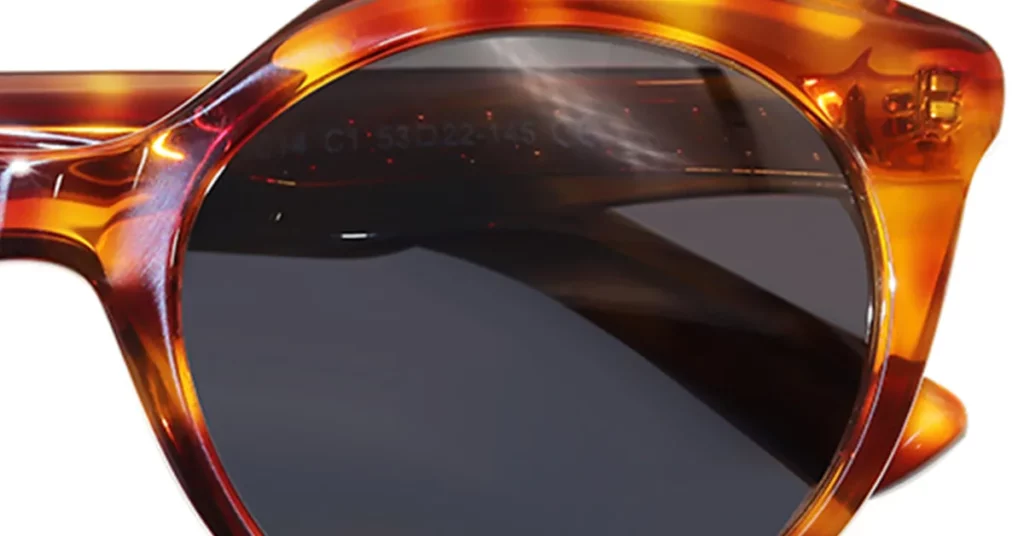Vintage acetate frames are defined by thicker materials, visible construction like pin-drilled rivets, and iconic shapes like the keyhole bridge. Modern acetate frames prioritize a minimalist look with thin, high-density materials, seamless construction, and hidden hinges. The choice signals your brand’s core identity: heritage and craft versus innovation and lightness.
Decoding the Language: Vintage vs. Retro
To build a credible brand, you must first master the language. The terms “vintage” and “retro” are often confused, but in product design and manufacturing, they mean very different things. Understanding this distinction is the first step toward creating an authentic product story that connects with your customers.
What is “True Vintage”?
A common guideline is the “20-year rule,” which suggests trends recur on a cycle long enough to feel nostalgic. While a useful start, this rule is not enough to define “true vintage” eyewear. For industry professionals, true vintage is about a combination of authenticity, demand, and original craftsmanship.
Simple Analogy: True vintage is about more than just age; it’s a mark of authenticity and desirability. This means the frame was physically made in the era it represents, using that period’s unique materials and techniques. Think of it like a first-edition book versus a modern reprint—while the story is the same, only the original artifact carries the history and value of its time.
Definition: A true vintage frame is an original artifact, physically manufactured during the historical era it represents (e.g., a pair of cat-eye glasses from the 1950s).
Crucially, an old pair of glasses that was unpopular and never sold is not vintage; it is simply dead stock. True vintage items are sought-after, retaining value due to their design or quality. For example, original Bausch + Lomb Ray-Ban Shooter sunglasses are prime vintage pieces because of their iconic design and legendary American manufacturing quality.
This leads to the final pillar: craftsmanship. Many vintage frames were built to last a lifetime, featuring meticulous hand-finishing and robust materials like high-grade cellulose acetate cured over long periods. As marketers dilute the term, experts now use “true vintage” to distinguish an authentic historical piece from a modern imitation.
What is “Retro”?
In contrast, “retro” refers to newly made products designed to look like they are from a past era. A retro frame is a modern homage, a reproduction that mimics a vintage style but is manufactured using contemporary materials, technologies, and production methods. It is a reinterpretation, not an original.
Definition: A retro frame is a modern reproduction or reinterpretation that mimics the aesthetic of a past era but is produced with current manufacturing techniques.
The hit TV show Mad Men, for instance, featured original vintage eyewear, which inspired many brands to create new, retro-style collections that captured the 1960s look. The critical difference is often construction quality. While vintage pieces are valued for durable, often handcrafted origins, retro frames are typically mass-produced for affordability.
Common Mistake: Labeling a retro product as “vintage” misleads the consumer and can damage your brand’s reputation. The correct positioning is as a “vintage-style” or “vintage-inspired” piece, which honestly celebrates a past look brought into the present.
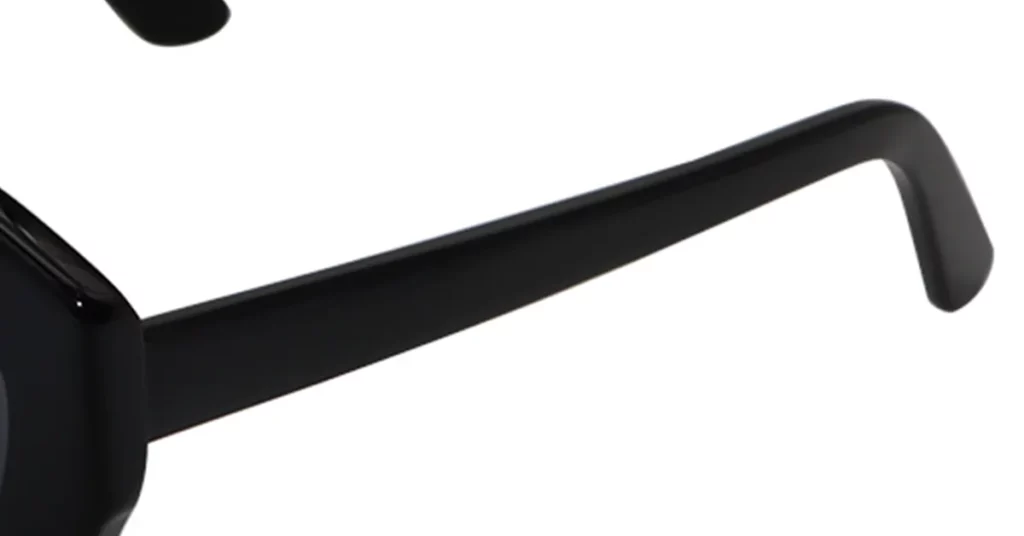
Why Old Styles Come Back: Laver’s Law
The appeal of vintage and retro styles follows a predictable pattern. Fashion theorist James Laver developed Laver’s Law, a timeline describing a trend’s life cycle. A style is considered daring, then smart, then dowdy, and eventually, after enough time, it becomes “charming” or “romantic” again.
This cycle explains why styles from the 1990s and early 2000s (Y2K) are popular now. They feel nostalgic to a new generation. This is part of the broader fashion zeitgeist, a German term meaning “spirit of the age,” which often refers to a trend influenced by the past.
Definition: The zeitgeist, in a fashion context, means “spirit of the age” and often describes a prevailing trend that incorporates elements from past eras.
For you as a brand manager, these cycles are a strategic tool. You can anticipate which historical eras will resonate next. True vintage appeals to collectors seeking authenticity, while retro appeals to a broader consumer who wants the aesthetic of a bygone era at an accessible price.
| Attribute | True Vintage | Retro | Antique |
| Age | 20-99 years old; defined by desirability, not just age. | New, but designed to look like a past era. | 100+ years old. |
| Authenticity | Authentic, original items from the period they represent. | Modern reproductions inspired by older styles. | Original, historical artifacts. |
| Craftsmanship | Often handcrafted with superior historical techniques. | Typically mass-produced with modern methods. | Highly crafted, often handmade. |
| Materials | Period-specific, high-grade materials (e.g., cured acetate). | Modern materials that may mimic a vintage look. | Period-specific materials, often fragile (e.g., Bakelite). |
| Value Driver | Rarity, condition, brand heritage, and craftsmanship. | Aesthetic appeal, current trends, and affordability. | Historical significance, rarity, and provenance. |
| Target Consumer | Collectors and connoisseurs valuing authenticity and history. | Fashion-conscious consumers seeking a nostalgic look. | Serious collectors and historians. |
The Bottom Line: Use “vintage” when referring to an original, authentic piece from a past era. Use “retro” or “vintage-inspired” for a new product that mimics an older style. This precision protects your brand’s credibility and builds trust with knowledgeable customers.
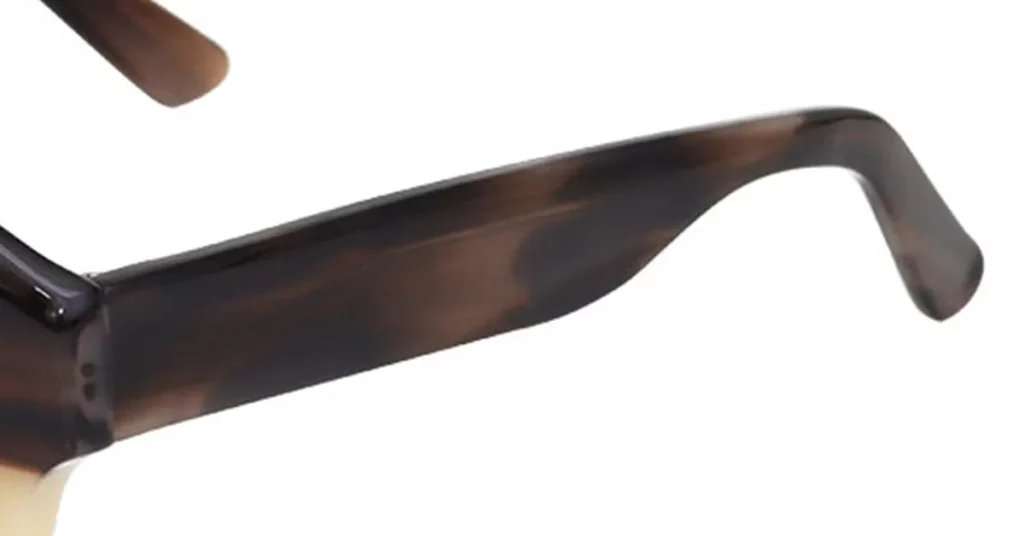
The Soul of the Frame: Acetate Material Analysis
The material you choose is the essence of your frame. It dictates weight, feel, color, and durability. In premium eyewear, cellulose acetate is king. But not all acetate is the same. Understanding the differences between high-quality block acetate and its alternatives is essential for creating a product with integrity.
How Block Acetate is Made
Unlike petroleum-based plastics, cellulose acetate is a biopolymer derived from renewable resources like wood pulp and cotton. This plant-based origin makes it hypoallergenic. The process of turning this raw material into a polished frame is a blend of science and art, far more complex than injection molding.
It starts by combining cellulose with color pigments and acetone to form a paste. This paste is mixed, layered, and pressed to create unique patterns like tortoiseshell. These layers are pressed into large blocks, which are then cured in kilns for weeks to stabilize the material and prevent future warping.
Once cured, the blocks are sliced into sheets. Frame components are cut from these sheets using precision CNC machines. From there, the process becomes intensely hands-on. Skilled craftspeople hand-file, shape, and polish the components. The parts are tumbled for up to 36 hours in barrels with wood chips and polishing pastes before a final hand-polishing. This entire process can involve over 100 distinct steps.
High-Density vs. Thick-Gauge Acetate
Within premium acetate, the thickness and density you choose will define your frame’s properties and design language. This is a primary strategic decision that sets the course for your brand’s aesthetic and target audience.
Simple Analogy: High-density acetate is engineered for strength in thin profiles, while thick-gauge acetate is all about substance and presence. The first uses high pressure to create a compact material perfect for sleek, modern designs. The second focuses on building up layers for a bolder, more sculptural look. Think of it like the difference between a carbon fiber bicycle frame and a classic steel one—both are high-quality, but one is built for lightweight performance and the other for robust presence.
| Feature | High-Density Acetate | Thick-Gauge Acetate |
| Thickness | Slim profiles (typically 1.5mm to 3mm). | Substantial profiles (typically 4mm to 10mm+). |
| Aesthetic | Minimalist, modern, and tech-inspired. | Bold, vintage-inspired, and sculptural. |
| Feel | Exceptionally lightweight and comfortable for all-day wear. | Heavier, conveying a sense of quality and luxury. |
| Key Benefit | Strength-to-weight ratio allows for sleek, durable designs. | The sheer volume allows for intricate details like deep bevels. |
| Best For | Brands with a “Minimalist Tech” identity. | Brands with a “Heritage Craftsman” identity. |
The Bottom Line: Your material choice is an upstream commitment to a specific brand identity. A minimalist brand needs the properties of high-density acetate to create its designs. A heritage brand needs thick-gauge acetate for its substantial feel and retro look.
Acetate vs. Injection-Molded Plastics
The main alternative to block acetate is injection-molded plastic, a method optimized for speed and low cost. The process involves melting plastic pellets and injecting the liquid into a mold, allowing for the rapid production of thousands of identical frames. The trade-offs, however, are significant.
| Feature | Block Acetate | Injection-Molded Plastic |
| Quality & Feel | Dense, substantial, and has a “natural feel.” | Often feels cheaper, lighter, and less substantial. |
| Color | Embedded deep within the material; will not fade or peel. | Sprayed on the surface; prone to chipping and peeling. |
| Durability | Highly durable and long-lasting. | Generally lower quality and more prone to breaking. |
| Adjustability | Can be heat-adjusted by an optician for a custom fit. | Often impossible to adjust without causing damage. |
| Cost | Significantly more expensive due to labor and time. | Far less expensive due to automated mass production. |
The Bottom Line: If your goal is a premium product with rich color and a durable feel, block acetate is the only choice. If your primary driver is the lowest possible cost for the mass market, injection molding is the necessary method. Your material is the first indicator of your commitment to quality.
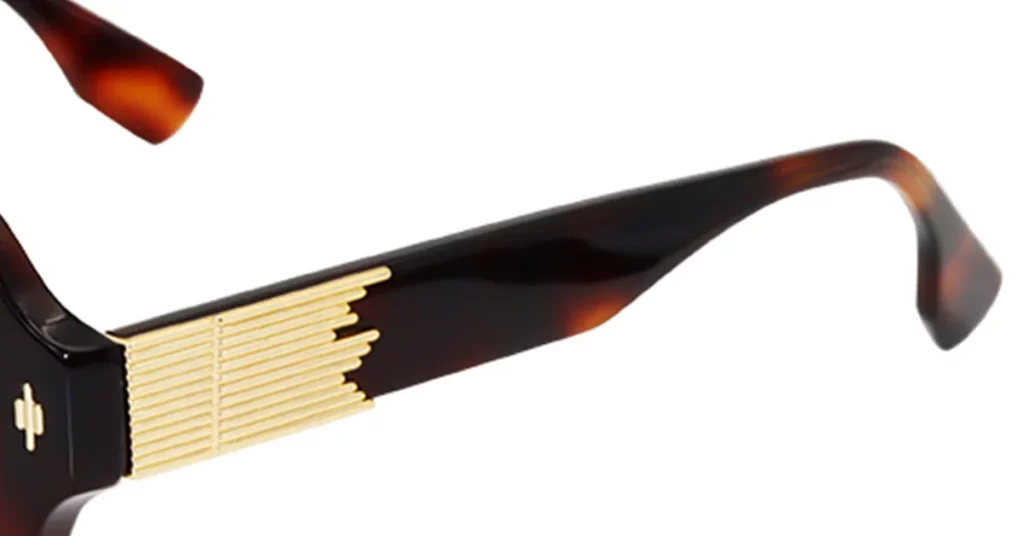
The Anatomy of Quality: Frame Construction Details
Beyond the material, a frame’s character is defined by its construction. Small components like the bridge, rivets, and hinges are powerful signals of craftsmanship and design intent. Learning to “read” the anatomy of a frame is learning the language of quality itself.
The Bridge: Keyhole vs. Saddle
The bridge is critical to both the ergonomic fit and stylistic character of the eyewear. The two dominant designs, the saddle bridge and the keyhole bridge, offer distinct advantages and communicate different aesthetic messages.
The saddle bridge is the most common design. Shaped like a saddle, it follows the nose’s contours in a smooth arc. Its large surface area distributes weight evenly, making it exceptionally comfortable for heavier frames. Aesthetically, it offers a clean, understated, and modern look, making it a lower-risk choice for broad market appeal.
The keyhole bridge, named for its distinctive shape, is an iconic feature of vintage eyewear. It rests on the sides of the nose, leaving a gap at the top. This design allows the frame to sit slightly higher and is an excellent fit for those with wider noses. Aesthetically, it creates a clear vintage charm and adds architectural character.
Pro Tip: A frame in dark, opaque acetate with a keyhole bridge makes a strong, defined statement. The same shape in a clear crystal acetate offers the vintage silhouette while minimizing the bridge’s visual impact on the wearer’s nose.
Rivets: Functional vs. Ornamental
Rivets are the small metal pins on the front and sides of many acetate frames. To an informed designer, they are one of the most reliable indicators of construction quality. You must learn the difference between functional, pin-drilled rivets and their purely ornamental counterparts.
The traditional, superior method is pin-drilling. A hinge is placed in a recessed area, and tiny holes are drilled through the acetate and into the hinge plate. Metal pins are inserted and secured, creating a permanent mechanical bond. The visible heads of these rivets are external proof of this superior internal construction.
In contrast, ornamental rivets are purely decorative plaques that are glued or heat-stamped onto the surface. They have no structural function. The hinge itself is attached using a hidden method, like being embedded in the acetate. This delivers a “retro vibe” at a fraction of the cost but offers none of the structural benefits.
Simple Analogy: A functional, pin-drilled rivet is what we call a “costly signal” of quality. This means the brand has intentionally chosen a more difficult and expensive manufacturing process to guarantee durability. Think of it like a high-end leather bag with hand-stitching versus a machine-stitched one—the visible craft is tangible proof that the maker invested more time and money to create a superior product.
Definition: A “costly signal” is a trait or action that is expensive to produce and therefore reliably indicates the quality of the signaler. In eyewear, visible pin-drilled rivets signal a brand’s commitment to durability over cost-cutting.
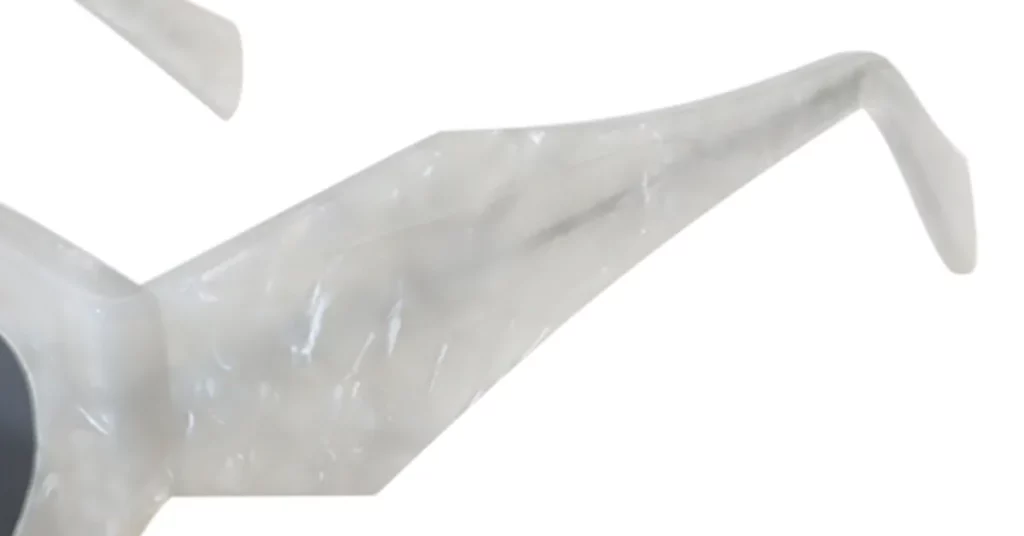
Hinges: Repair vs. Replacement
The hinge is the mechanical heart of a pair of glasses and its most common point of failure. The type of hinge used determines the eyewear’s lifespan and repairability. The industry has seen a shift from traditional multi-barrel hinges to modern heat-sunk ones.
The traditional multi-barrel hinge consists of interlocking metal rings held together by a tiny screw. They are classified by their number of barrels, typically three, five, or seven. The principle is simple: more barrels equal more strength and stability. A substantial acetate frame will often feature a robust five- or seven-barrel hinge.
Most Importantly: The paramount advantage of a multi-barrel hinge is its serviceability. Because it is a mechanical assembly, it is inherently repairable. An optician can adjust the barrels or replace a lost screw, treating the eyewear as a durable good meant for long-term use.
In contrast, the heat-sunk hinge is a product of modern efficiency. A metal anchor on the hinge’s base is heated and pressed into the acetate, which melts and then solidifies around it. This is a faster, cheaper shortcut favored in mass production. It offers a clean, seamless look but is almost impossible to repair.
| Feature | Pin-Drilled Multi-Barrel Hinge | Heat-Sunk Hinge |
| Durability | High to Very High. The mechanical bond is exceptionally strong. | Moderate. The bond can fail under high stress or impact. |
| Repairability | Excellent. Can be tightened, adjusted, and replaced by an optician. | Poor to Non-existent. A broken hinge often means a total loss. |
| Complexity | High. Requires precise, multi-step drilling and manual pinning. | Low. A faster, simpler process of heating and pressing. |
| Cost | Higher. Increased labor and components drive up production costs. | Lower. Reduced assembly time results in a more economical product. |
| Aesthetic | Visible hardware on the frame front acts as a design feature. | No visible hardware, creating a clean, minimalist appearance. |
| Brand Archetype | Heritage Craftsman, Luxury, High-End Niche. | Mass Market, Fast Fashion, Price-Point Driven. |
The Bottom Line: A multi-barrel hinge comes from a “repair and maintain” culture, where goods are designed for a long life. A heat-sunk hinge comes from a “replace and consume” culture, where low initial cost is prioritized. Your choice of hinge is a powerful statement about your brand’s values.
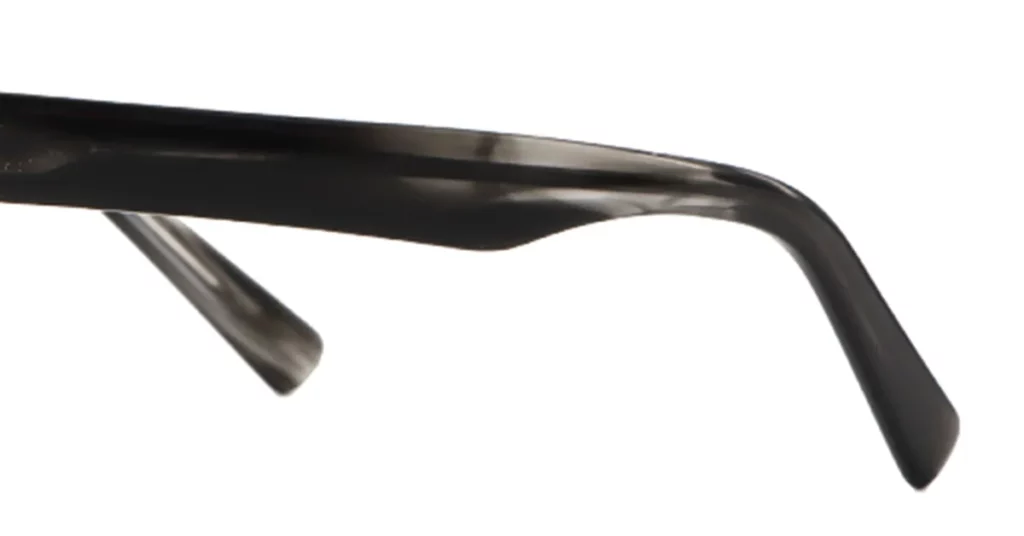
From Blueprint to Brand: Strategy & Synthesis
Now that you understand the core components, you can combine them into holistic archetypes. These models bridge technical knowledge and strategic application, helping you build a coherent design philosophy for your brand.
The Vintage Archetype
This philosophy celebrates construction as a core aesthetic feature. It communicates a story of substance, durability, and traditional craftsmanship. Every component contributes to a tangible sense of quality and history.
The frame begins with thick-gauge block acetate (4mm+), imparting a feeling of presence. The bridge is often a keyhole bridge, instantly signaling a mid-century aesthetic. The hinges are secured with functional, pin-drilled rivets whose polished heads are a primary design element. Finally, the hinge itself is a sturdy five- or seven-barrel hinge, an honest piece of engineering on display.
The Modern Archetype
This philosophy champions minimalism and seamless integration. Here, the goal is to make the construction disappear, leaving only a pure, uninterrupted form. This communicates a narrative of innovation, lightness, and forward-thinking design.
The foundation is high-density acetate (under 3mm), creating a frame that is thin and lightweight yet strong. The bridge is a smooth saddle bridge that flows into the rims. There are no visible rivets. The hinge is typically a heat-sunk or embedded hinge, concealed from the front to create a minimalist junction.
Building Your Brand with Acetate
The technical specs of your frame are the vocabulary of your brand’s identity. A customer may not know the term “five-barrel hinge,” but they can feel the difference in substance. Your strategy must align these tangible attributes with a compelling narrative.
The “Heritage Craftsman” Playbook
- Product: Thick-gauge acetate, keyhole bridges, functional pin-drilled rivets, and five- or seven-barrel hinges.
- Narrative: Focus on “handcrafted,” “artisanal,” and “built to last.” The higher price is an investment in timeless craftsmanship.
- Audience: The connoisseur who values quality over trends and is interested in sustainability.
The “Minimalist Tech” Playbook
- Product: Thin, high-density acetate, often combined with lightweight metals like titanium. Saddle bridges and hidden hinges are key.
- Narrative: Focus on “innovative engineering,” “ultra-lightweight,” and “uncompromising comfort.” It’s a modern solution for a modern lifestyle.
- Audience: Professionals, tech enthusiasts, and design purists who appreciate a sophisticated, functional aesthetic.
The “Bold Avant-Garde” Playbook
- Product: Often uses thick-gauge acetate for its sculptural possibilities. Features unconventional shapes, bold colors, and statement-making details.
- Narrative: A story of creativity, individuality, and exclusivity. The eyewear is positioned as wearable art, often in limited-edition releases.
- Audience: The fashion-forward individual who sees eyewear as a primary mode of self-expression.
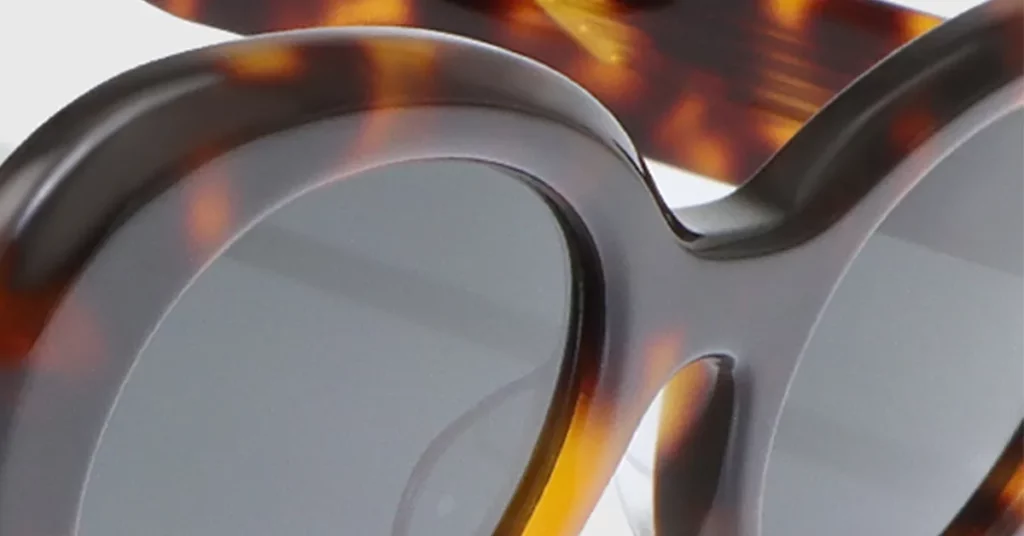
Launching Your Vision in the Market
A brilliant design is only effective if it can be successfully brought to market. For emerging eyewear brands, the direct-to-consumer (DTC) model has proven powerful, especially when paired with a keen understanding of current market trends.
Applying the DTC Model
- Launch with a Minimum Lovable Product (MLP): Start with a small, curated selection of frames that perfectly embody your brand’s chosen playbook. This focuses resources and establishes a clear identity.
- Use Lean SKU Testing: Before committing to a large run, test new models with a small batch (e.g., 25 units). If it sells out, you have proof of demand. If not, you can discontinue it without a major loss.
- Prioritize Authentic Storytelling: In my two decades of experience, I’ve seen that authentic stories are more powerful than expensive influencers. Early features in style magazines and user-generated content can build immediate credibility and community.
The 2025+ Eyewear Landscape
The market is currently defined by a bifurcation of consumer taste, with simultaneous demand for two opposing aesthetics. This isn’t a contradiction; it’s a clear opportunity for focused brand positioning.
The Retro Revival: There is a powerful resurgence of vintage-inspired styles. Oversized frames, geometric aviators, and bold browline shapes are trending. This is about making a confident statement and embracing nostalgia.
The Minimalist Movement: In parallel, there is strong demand for understated aesthetics. Frameless, semi-rimless, and thin metal frames offer a sleek, lightweight, and timeless look driven by a desire for functional elegance.
Best Practice: The greatest opportunity lies not in trying to appeal to everyone, but in choosing a side. You must decide whether your brand will serve the nostalgia-seeker or the modernist, then build a product and story that serves that niche with conviction.
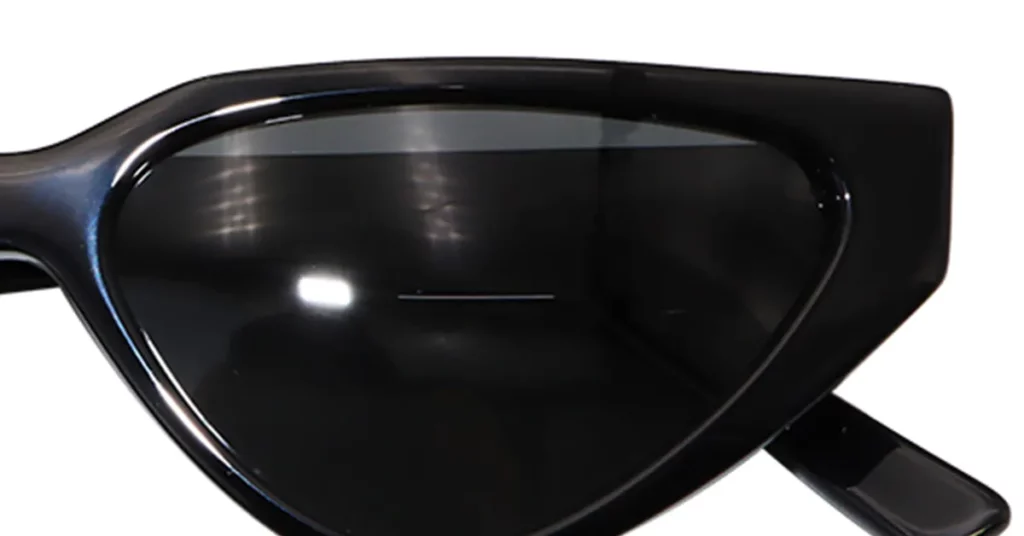
Conclusion
Your design choices—from the thickness of the acetate to the type of hinge you use—are the building blocks of your brand’s story. A keyhole bridge and visible rivets tell a story of heritage; a saddle bridge and hidden hinges tell one of modernism. By aligning these tangible product details with a focused brand narrative, you can create eyewear that not only looks great but also builds a powerful, lasting connection with your target customer.
Frequently Asked Questions
1. What is the main difference between vintage and retro eyewear?
Vintage eyewear refers to original, authentic frames that were manufactured 20-99 years ago. Retro eyewear is newly made but is designed to look like it’s from a past era, making it a modern homage to a vintage style.
2. Is acetate a good material for glasses?
Yes, high-quality cellulose acetate is a premium material for eyewear. It is strong, lightweight, hypoallergenic, and comes from renewable plant-based sources. It also allows for rich, layered colors that won’t peel or fade over time.
3. How can I tell if a frame has high-quality construction?
Look for the details. Visible metal pins (rivets) on the frame front often signal a durable, pin-drilled construction. Check the hinge; a sturdy five- or seven-barrel hinge is a sign of a frame built for longevity and repair, unlike a hidden, heat-sunk hinge which is typically irreparable.
4. Why are some acetate frames so much more expensive than others?
The cost is driven by the material quality and manufacturing process. Premium block acetate is expensive to produce, and the multi-step process of cutting, tumbling, and hand-polishing a frame is very labor-intensive compared to the fast, automated process of injection-molding cheaper plastic frames.
5. What is the most common mistake designers make when choosing a style?
The most common mistake is mixing signals. For instance, designing a thick, bold frame shape but using modern, hidden hinges, or creating a thin, minimalist frame with a traditional keyhole bridge. This creates a confusing product that lacks a clear point of view. The best designs are cohesive—every element should work together to tell the same story.

